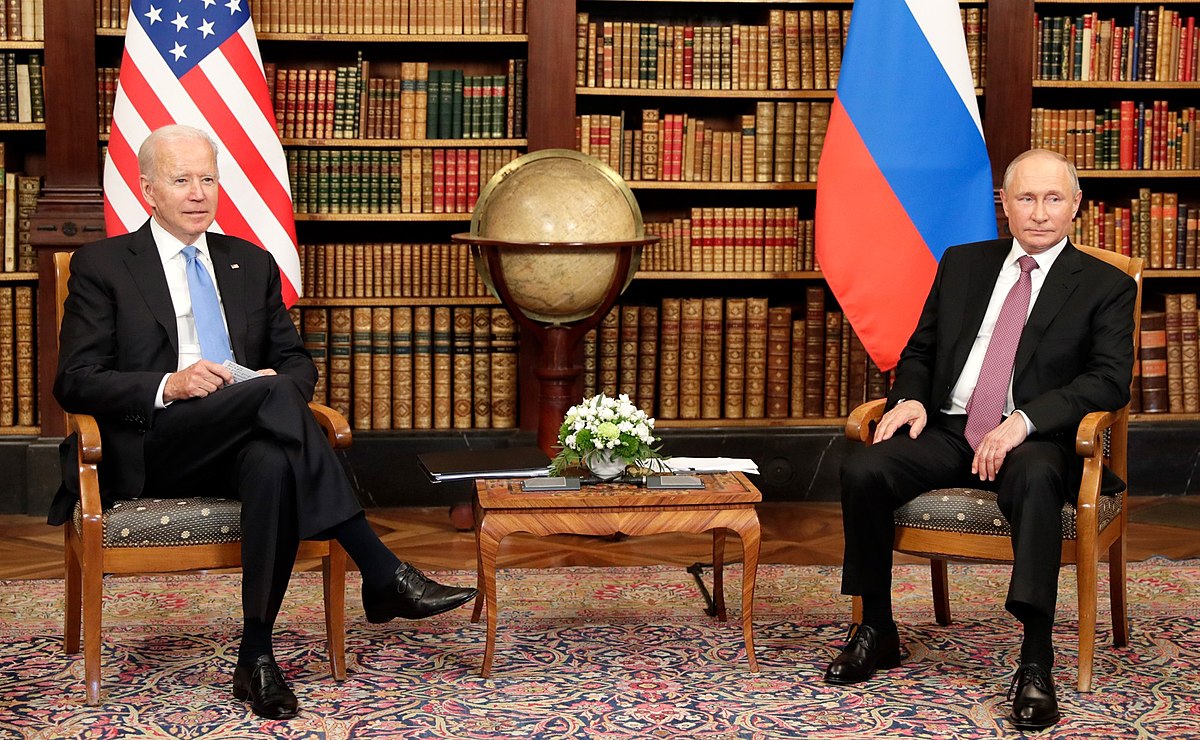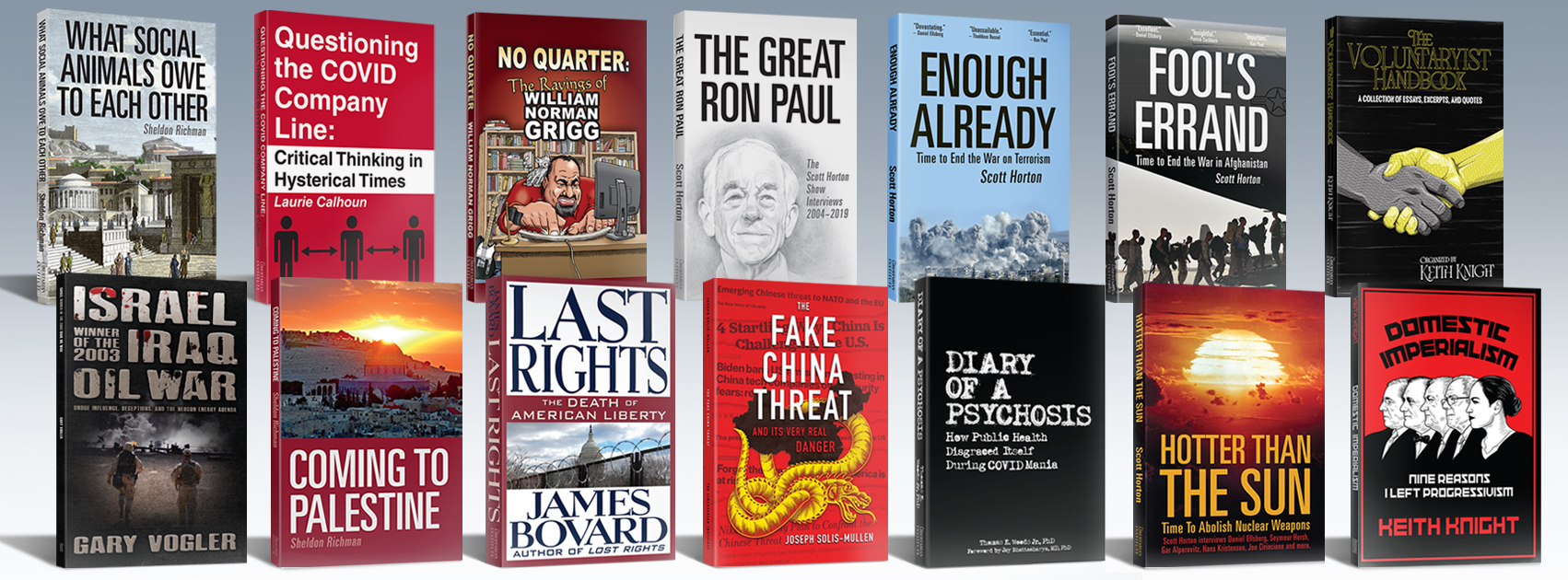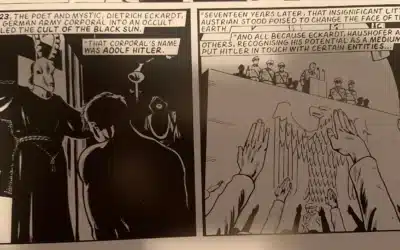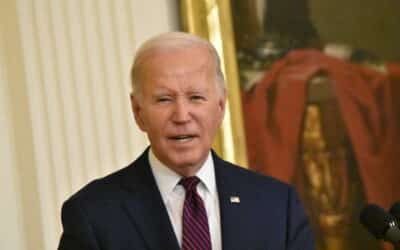Around this time last year, nuclear weapons became illegal. Well, sort of.
The Treaty on the Prohibition of Nuclear Weapons, an international agreement adopted by the United Nations General Assembly in 2017 after a majority of countries voted in its favor, entered into force on January 22, 2021 as Honduras became the 50th country to ratify the treaty. Overnight, the testing, development, production, possession and transfer of nuclear weapons was banned.
But here comes the rub. The treaty is only binding on those nations that joined. Unsurprisingly, the countries that actually possess or host nuclear weapons, as well as all NATO members, have boycotted the initiative, thereby rendering it powerless. The treaty is thus a bleak reminder of the Realpolitik considerations that inhibit powerful nuclear nations from relinquishing their weapons of mass destruction.
Yet, we must also not forget that ever since the height of the Cold War, both the number of and threat from nuclear weapons have been successfully reduced. However, big steps forward have come only when the West recognized its rivals as equals. Most importantly, this was the case in the period roughly between the 1962 Cuban Missile Crisis and the end of the 20th century, when the realization of mutual assured destruction resulted in the adoption of a number of arms control treaties that slowed down the arms race and, in time, reduced the global nuclear stockpile.
Before and after this era, however, the United States and its allies were undeterred from projecting dominance and pursuing a more aggressive foreign policy, even if that dominance was based on dangerous illusions. At the same time, both in the early days of the Cold War and today, the blame for the nuclear threat is placed largely on others, be they the former Soviet Union or the 21st-century “Axis of Evil.” Because the rest of the world sees through this hypocrisy, most non-proliferation efforts spearheaded by Western countries are counterproductive. Instead, they actually incentivize nations at odds with the West to invest into nuclear weapons as a defense mechanism.
Eliminating the threat of nuclear war can therefore only be achieved if the West starts to lead by example and adopts a policy of non-interventionism. A brief revisionist history illustrates this argument.
As is well known, the first atom bomb was developed by the United States during the Second World War in the context of an arms race between Nazi Germany and the Allies. Less known, however, is that the mere idea of “strategic’ bombing,” which targets an enemy’s civilian rather than military population and infrastructure, in and of itself is a product of twentieth-century total war. Militaries started to experiment with strategic bombing during the First World War and the Spanish Civil War, but the casualties remained relatively limited. Demoralizing the enemy through massive terror bombing became only normalized on a massive scale during the Second World War. Indeed, hundreds of thousands of civilians perished in the Axis and Allied bombing of urban centers in the course of that cataclysmic event.
The tragic peak, of course, was the American atomic bombing of Hiroshima and Nagasaki in August 1945. Together with conventional firebombing in the months leading up to the nuclear assault, dozens of Japanese cities were razed to the ground and at least half a million Japanese civilians were killed. In the decades after the war, the horrific atomic bombings were justified on the basis that they had saved the lives of an equal number of American soldiers from the counterfactual scenario of a U.S. invasion of Japan.
In recent years, however, this myth has been blown out of the water. Samuel Walker, historian at the U.S. Nuclear Regulatory Commission, has written that “the hoary claim that the bomb prevented one-half million American combat deaths is unsupportable.” Rather, he pointed out in a 1990 review article that “the consensus among scholars is that the bomb was not needed to avoid an [American] invasion of Japan and to end the war in a relative short time.” Since then, historians on both sides of the Pacific have argued that the Soviet entry into the war, which occurred in between the two atom bombs, had more to do with Japan’s surrender; and that geopolitical considerations about the post-war settlement were more decisive than military strategy in Harry Truman’s decision to pull the nuclear trigger.
In short, from the very beginning the atom bomb served much broader political purposes beyond military deterrence. For the West Europeans, in particular, the American atomic umbrella gave a sense of security and an easy excuse not to invest too much in their own defense. Behind the scenes, West European officials were adamant supporters of the so-called “first use” doctrine, which granted NATO the right to start a nuclear war in the face of a conventional—i.e., non-nuclear—threat. The Truman, Eisenhower, and Kennedy administrations in turn interpreted that policy quite liberally and contemplated a nuclear first strike on multiple occasions, including during the Korean and Vietnam Wars and the Berlin crises of both 1948 and 1961.
Sooner or later, however, the period of American nuclear dominance was bound to come to an end. But long before it did, phony fears about Soviet superiority stoked the arms race further. On the basis of an alleged imminent “missile gap” in intercontinental ballistic missiles, John F. Kennedy launched the largest and fastest military build-up in peacetime history in the beginning of the 1960s. But this effort proved to be misguided, because American spy satellites soon confirmed that the ICBM gap was in fact 10 to 1 in favor of the United States.
The cost of the paranoia amplified by the missile gap myth was higher than the wasted dollars that flowed into the coffers of the military-industrial complex, however. NATO’s first use policy, together with the encircling of the Soviet Union with medium range nuclear missiles in Europe and Asia, convinced Nikita Khrushchev to return the favor and attempt to install nuclear missiles in Fidel Castro’s Cuba. The Cuban Missile Crisis was the result.
A scenario similar to the twin events of the missile gap panic and Cuban Missile Crisis unfolded in the 1970s and 1980s. From Moscow’s point of view, the goal of détente was the nullification of American nuclear superiority and the achievement of strategic parity. Because the USSR kept lagging behind technologically, it sought to catch up in numbers. In Washington, however, the temporary military build-up that this goal necessitated was perceived as an attempt to gain nuclear superiority. Moreover, hawks inside and outside government claimed that the Soviets were bent on initiating—and winning—a nuclear war.
Like the missile gap, this assertion, too, was exploded as a myth after the Cold War. Interviews with former Soviet officials and archival research of Warsaw Pact military manuals demonstrated in the 1990s that unlike the U.S., the USSR never considered a first use option. In fact, the Soviets were paranoid of a Western first strike and repeatedly offered a mutual “no first use” commitment. NATO dismissed such proposals as propaganda, however, and stoked a new arms race in technologically advanced nuclear technology, which had always been Moscow’s weak spot.
Thus, when NATO deployed technologically advanced Pershing II and Tomahawk cruise missiles in Western Europe in the fall of 1983, which coincidentally coincided with yearly nuclear war drills, the paranoia in Moscow reached fever pitch. The Pershing II could reach Moscow in a record time of six to eight minutes, thus compromising the Soviets’ “launch on warning” system. The cruise missiles, for their part, were difficult to intercept because of their automated flying technology. On the basis of intelligence coming out of the then biggest military intelligence program in history, several party members and military officials were convinced that NATO was conniving a first strike. The Soviets readied their nuclear forces, but in the end, cooler heads prevailed when NATO did not respond in kind. The 1983 war scare is often considered the closest the superpowers came to nuclear war since the Cuban Missile Crisis.
In the long term, however, important steps were taken to regulate, and eventually roll back, the arms race. After the recognition of mutual assured destruction in the 1960s, several arms control agreements, such as the Limited Test Ban Treaty, the Non-Proliferation Treaty, the Anti-Ballistic Missile Treaty, and the Strategic Arms Limitation Treaty were signed in the context of relaxing relations between East and West. Although the 1979 SALT II Treaty was never ratified by the American Congress due to a last uptick in the Cold War, the arms control regime regained the upper hand after the 1983 war scare. Indeed, according to historian Beth Fisher, the war scare had a profound personal impact on Ronald Reagan, causing the president to reconsider his previous hawkish positions.
Combined with the coming to power of Mikhail Gorbachev in the USSR, Reagan’s change of heart paved the way for the 1987 INF and 1991 START Treaties, which for the first time went beyond mitigating the arms race and actually reduced the number of warheads. The INF Treaty even led to the elimination of a whole category of nuclear weapons, namely ground-based intermediate-range nuclear missiles, which included the above-mentioned Pershing II and Tomahawk cruise missiles. Under subsequent treaties, but also unilaterally, both superpowers continued to reduce their stockpiles drastically. As of 2021, the global nuclear stockpile is 19% of what it was during its Cold War peak.
Yet today nine nuclear weapon possessing countries still collectively sit on top of an arsenal of roughly 13,000 warheads, 91% of which are owned by Russia and the United States. Of these, more than 3,500 are operationalized on missiles and bomber bases, still enough to drag civilization into a catastrophic war. Worse, this militarized stockpile has actually started to increase again, whereas the pace of reduction of the overall global nuclear arsenal has slowed down. Finally, and perhaps most disturbingly, the concept of limited nuclear warfare with low-yield warheads, controversial even during the Cold War, has seen a resurgence in American military doctrine.
The new millennium marked the turning point in this alarming trend. When George W. Bush entered the White House, he brought with him a litany of neoconservatives who wanted to capitalize on Washington’s “unipolar moment” to reassert American global dominance and remake the world in their image. The disastrous wars in Iraq and Afghanistan are infamous testimonies of this interventionist ideology. But the Bush administration’s unipolar tendencies had reverberations that extended into nuclear weapons policy, too. In December 2001, in spite of Vladimir Putin offering early cooperation in the war in Afghanistan, Bush pulled out of the 1972 ABM Treaty.
This withdrawal has paved the way for the step-by-step construction of a NATO anti-ballistic missile defense system in Eastern Europe, a move that has often been harshly criticized by Moscow but has received very little attention in the Western press. Last summer, for instance, Putin drew a direct comparison with the Cuban Missile Crisis, arguing that the launching systems in Romania and Poland could carry offensive in addition to defensive missiles. If so, the flight time to Moscow is 15 minutes, roughly the same amount of time Soviet missiles would have needed to reach American shores if Khrushchev’s plan had succeeded in 1962. Furthermore, if Ukraine were to join NATO and host similar missile launchers, which the Russian president has recently confirmed to be an absolute red line, that flight time would drop to 7-10 minutes, almost the same as the Pershing IIs from the 1980s.
Unlike Bush, Barack Obama did not leave any of the Cold War-era arms control treaties. Better yet, he made the elimination of nuclear weapons a centerpiece of his early foreign policy agenda. To that end, New START, a treaty signed in 2010, reduced the Russian and American stockpiles of deployed nuclear weapon launchers further to nearly two-thirds of the original START Treaty. Yet, to placate critics of the agreement, Obama also pushed through a $1 trillion nuclear modernization program and in his second term backtracked on adopting a no first use policy. Finally, he continued the rolling out of NATO’s ABM system in Europe.
It is in reaction to these developments that Putin decided to respond. In March 2018, more than a decade and a half after Bush pulled out of the ABM Treaty and against the backdrop of new Cold War-like tensions, the Russian president announced the development of a number of nuclear-capable missiles that seek to circumvent NATO’s ABM system—either by flying over the South Pole, or with the help of innovative technologies that allow for hypersonic speed and automated “cruise” flying. All this talk about fanciful hypersonic and missile-intercepting weapons, the technological feasibility of which has always been questionable, has spurred a new arms race between the American and Russian military-industrial complexes.
Meanwhile, Donald Trump added even more oil to the fire. In spite of all the “Russiagate” accusations, the Trump administration pulled out of not one but two arms control treaties, while it almost let a third die. First, in late 2018 the U.S. announced that it would leave the 1987 INF Treaty. It did so on the basis that Russia had violated its “spirit and intent” by deploying a new ground-based cruise missile, ignoring warnings from both Moscow and independent scientists that the missile launchers in Poland and Romania might have violated the treaty as well. Instead of negotiating a solution, however, Trump simply pulled out.
The boldness of this move can perhaps be explained by the fact that the treaty had tied Washington’s hands in its strategic competition against China, which was not a party to the agreement. Indeed, it was reported that the fact that the treaty “constrained” Washington’s efforts to counter China was a contributing motive in the withdrawal decision, even though that country’s nuclear arsenal is just a fraction of those of the U.S. or Russia.
The second treaty the Trump administration left is the Open Skies Treaty, an important confidence building agreement between 36 nations that allows for unarmed air inspection. Finally, it also let Obama’s New START Treaty expire, rebuffing Russian proposals for extension. Fortunately, a year later Joe Biden reentered that treaty, which is now the only Russian-American agreement left to restrain the Cold War enemies from descending into a new nuclear arms race.
In short, there is a case to be made that throughout the old and new Cold War, America has been the main driving force behind the subsequent waves of the nuclear arms race. This does not mean that Russia is to be accused from any of the blame, of course. It does mean, however, that if Washington reverses its current course and returns to phasing out its nuclear arsenal, Moscow will likely follow suit. In time, this process would bring the American and Russian stockpiles more in line with those of the other nuclear weapon possessing countries.
In such a climate, the era of strategic parity would return in a multilateral form. Without any threatening hegemon, the nuclear bomb would remain in place only as an existential instrument of deterrence. A number of measures, such as the adoption of no first use policies, the liquidation of forward-based tactical warheads and the banning of limited nuclear warfare from military doctrines, could in this context contribute to more relaxed relations between the nine nuclear states.
In the long run, then, the leaders of these nations might come to understand the increasing irrelevance of nuclear weapons. After all, the UN General Assembly is not the only authority exerting pressure on the nuclear states. A growing number of former high-level U.S. officials, too, have argued that nuclear weapons are obsolete for the purposes of military defense.
Unfortunately, current American leaders have taken few steps in this direction. Worse, in the post-9/11 era they have given rival nations more—not less—reason to cling onto or even create new nuclear deterrents. This message can be most evidently illustrated by reviewing American foreign policy towards the three countries that Bush Jr. haphazardly lumped together in the so-called “Axis of Evil”: Iraq, Iran, and North Korea. These countries were all signatories to the Non-Proliferation Treaty in 2002, but that did not stop the US from accusing them from seeking weapons of mass destruction (WMDs) and pushing for regime change in Baghdad, Tehran, and Pyongyang.
In the Middle East, the Anglo-American invasion of Iraq was in large part legitimized on the basis of the false pretext that Saddam Hussein secretly possessed WMDs, in spite of the fact that the contemporary information from intelligence agencies and UN weapons inspectors justified no such claims. Regarding Iran, too, the CIA and Mossad have on occasion agreed with the repeated confirmations of the International Atomic Energy Agency that Iran has no active nuclear weapons program. Yet, ever since the 1980s subsequent American administrations have claimed the contrary, even after both supreme religious leaders of the Islamic Republic have basically forbidden the procurement of WMDs on a religious basis.
In the last few years, Iran has actually shown how an effective conventional deterrent can be realized by arming regional allies with non-nuclear missiles and drones. The so-called “axis of resistance”—which is led by Iran and includes Hezbollah in Lebanon, the Houthis in Yemen, Iranian-backed militias in Iraq and Syria’s Assad regime—is now firmly established as a balance against Israel’s regional nuclear monopoly and at least partially deters American and Israeli military action. In truth, Iran only ever enriched uranium beyond levels necessary for nuclear energy as a negotiating tactic to get sanctions relief and bring the U.S. to the negotiating table. This “enrichment diplomacy” was Tehran’s answer to Obama’s “maximum pressure” campaign in the lead-up to the 2015 nuclear deal, and it looks like the Iranians have resorted to the same strategy after Trump pulled out of the agreement in 2018.
The blowback has been worst in North Korea, however. The DPRK became the first country to leave the Non-Proliferation Treaty in January 2003, a year after Bush’s “Axis of Evil” speech. True, the North Koreans’ commitment to the NPT was already in question before that, but Bush’s rhetoric might have pushed them over the edge. Since 2006, the DPRK has carried out six nuclear tests with increasing levels of expertise. Although the details are obscure, there is little reason to doubt that the North Korean regime today possesses a nuclear deterrent that can do significant damage and initiate a devastating nuclear war.
Unsettling as it might be, this means that Western leaders will have to learn how to treat Kim Jong-Un with a modicum of respect. Fortunately, there is a precedent: the world also survived other nuclear-armed dictators, such as Joseph Stalin and Mao Zedong. The problem is that the U.S. has long considered such leaders as uniquely irrational and continues to operate from the illusion that it can play the role of global policeman indefinitely.
Indeed, when Trump’s national security advisor and vice president made off-handed remarks about employing the “Libya model” in the lead-up to a historic meeting between Trump and Kim Jong-Un in 2018, they did not realize that they were actually reminding the North Koreans why it is wise to cling onto their nuclear deterrent. Indeed, when Muammar Qadhafi gave up his WMD program in 2003 in exchange for sanctions relief, he lost a deterrent that might have prevented the NATO-sponsored regime change war in 2011 that led to his downfall and brutal murder.
This brings us to the heart of the problem: America’s interventionist foreign policy does not prevent the proliferation of nuclear weapons, it enhances it.
Throughout much of the nuclear era, the U.S. has been the dominant global nuclear power—or has at least operated on the premise that it was. To maintain that position, the U.S. government has spearheaded several waves of nuclear arms races, maintained a vast global military empire, and intervened into the domestic affairs of other countries on a routine basis. In doing so, it has stimulated rival nations to obtain nuclear deterrents.
To believe that America’s foes are the main drivers of nuclear tensions instead, one has to believe in the benevolent merits of U.S. empire. But most of the world does not. International polls demonstrate that America is seen as the biggest threat to world peace, leaving other contenders far behind.
Further movement towards the elimination of the threat of nuclear war is therefore only possible if the U.S. government moves towards a non-interventionist strategy—in nuclear and other foreign policy matters alike. The good news is that a majority of Americans actually favors a less interventionist foreign policy that prioritizes domestic issues instead.
In time, a world without nuclear weapons is achievable. The nuclear bomb would not be the first class of weapons to be consigned to the dustbin of history. A number of nasty bombs, from landmines to chemical weapons, have been marginalized as a result of international prohibition agreements. From this perspective, the UN’s ban on nuclear weapons is a step in the good direction. It can be of service as a pressure tool to move the nuclear weapon possessing countries and their allies in the right direction.
Bas Spliet is a historian and PhD candidate at the University of Antwerp in Belgium. He writes about a variety of topics from a historical angle, all of which can be found on his Substack, (Re)writing history. You can follow him on Twitter.

